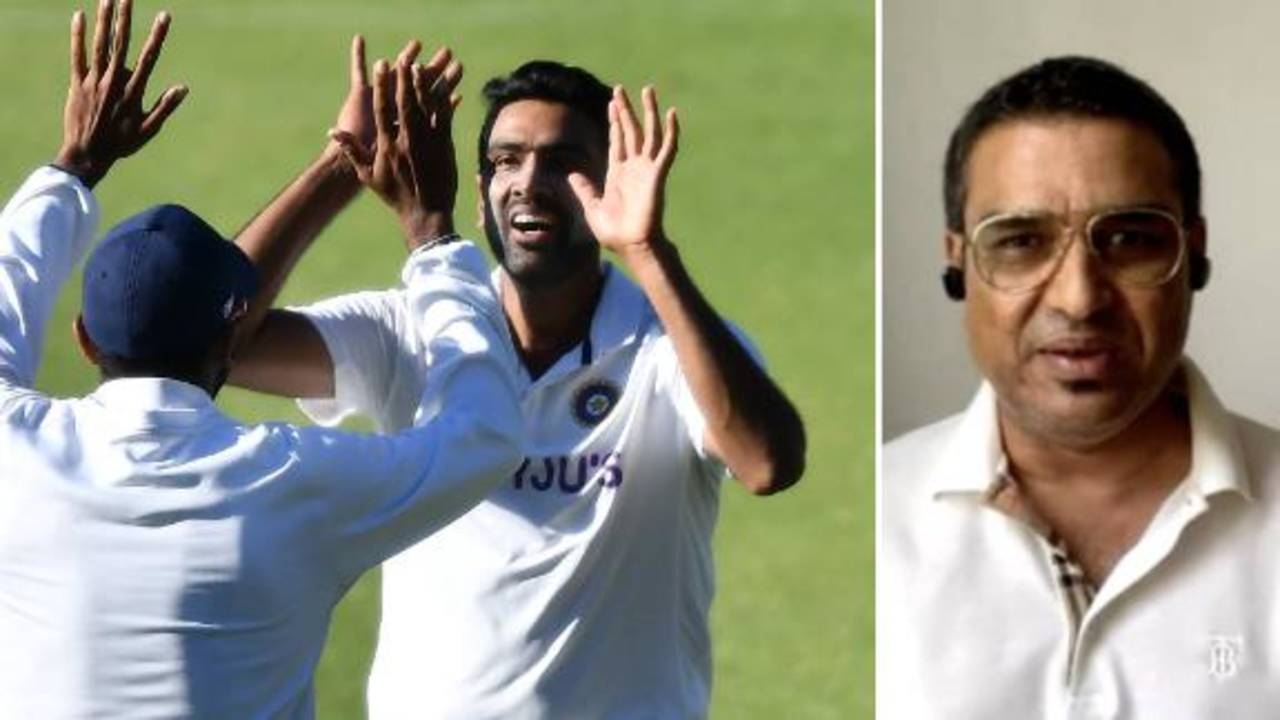India in driver's seat because of their method, skill and discipline
Their spinners bowled fewer poor deliveries and drew more forward-defensives from the England batsmen
Sidharth Monga
14-Feb-2021
It is a peculiar thing that has been happening during Tests in India for at least 20 years. It was on full display when the crowds returned to Chennai for the second Test. It is not exactly that but it sounds like a wild celebration at the fall of India's second wicket. First it used to be for Sachin Tendulkar, now Virat Kohli.
Steve Waugh described this period when the intensity picked up but also when the crowd would disorient you as fielders. Waugh wrote by the time you got used to the noise, Tendulkar already had 40 on the board. Not too different with Kohli. If you did manage to get Tendulkar out early, the pin-drop deathly silence in the stands was a joy for the fielding sides. England had managed it here in five balls. Kohli and the crowd were stunned by the full Moeen Ali offbreak that bowled him.
India were now 86 for 3 in the first session. Sixty-five of those had been scored by one man. The man coming in was coming off scores of 1 and 0, someone who prefers facing pace to spin. India were playing five bowlers. Never mind all the profligacy before, England still had a chance to get right back into the game. They had done so twice after losing the toss against Sri Lanka in Galle not long ago. An attacking field was set. In came Ali, and what Ajinkya Rahane got was a full toss first ball, which he dispatched for four through extra cover.
It summed up England's bowling effort. Because of the excessive assistance from the pitch, there were unplayable balls every now and then but equally there were full tosses, half-volleys and long hops to take the pitch out of the equation. Kohli just happened to get the best ball out of the Ali lengths bingo. The spinner Ali replaced, Dom Bess, bowled seven full tosses in the fourth innings in the first Test, conditions out of a spin bowler's dream. Ali bowled 10 in the first innings of this Test, a match tailormade for spinners, where puffs of dust and mini explosions were seen as early as in the first half hour of the match.
When the ball reached the hands of R Ashwin and Axar Patel, though, the full tosses and the long hops disappeared. In all, England spinners bowled 14 full tosses. On 20 occasions they were cut or pull. India's spinners were cut or pulled 10 times, and bowled no full tosses. And full tosses and being cut or pulled is the extremes; there are many other bad balls spinners can bowl within the spectrum.
Basically, as a spinner on such a pitch you know you are in the game if you keep drawing a forward defensive or from on the crease. In a much shorter innings, India's spinners drew the forward-defensive 112 times to England's 115. If you are accurate enough to keep the batsmen tied down, your eventual misbehaving ball is likelier to be more lethal because you will have fielders in place to take the catches. Add to the accuracy the guile of Ashwin's changes of pace, the drift, and then the variations in seam angles from both the spinners to make sure the ball spins less.

India's spinners bowled no full tosses in England's first innings•BCCI
Overall India's batsmen were in control 82.4% of the times as against England's 74.6%. If your bowlers are good enough to draw a false response once every four balls as against the opposition doing it once an over, you will end up on the winning side.
Especially when you have batsmen who are playing a role in doing so. Bowlers should always get the extra credit because they initiate every bit of action in cricket, but sometimes bowlers react to what has been happening too. India batted way better than England did against spin. This pitch looked like a selectively watered one, where drier areas provided excessive turn and smoother ones went straight on. And they were next to each other on a good length for spinners and slightly fuller.
Rohit Sharma, Ajinkya Rahane and Rishabh Pant didn't let it matter. In all India's batsmen stepped out 81 times, reaching the pitch of the ball and doing their thing before it could do its. They swept from the rough and were to the pitch of the ball when the spinners went straighter. England often got caught up on the crease, stepped out - or were allowed to do so - only 20 times, and swept from straight lines.
This is something India perhaps saw in the third innings in the last Test. It was a much better pitch for the batsmen, only really got difficult on days four and five. The control percentages in the four respective innings there were 88, 89.4, 79.5 and 88.3. That dip in the third innings didn't go unnoticed. Knowing the quality of spin England brought, India knew it was the scoreboard pressure that made them potent. That is why they were happy to take the risk of what can sometimes turn out to be a lottery pitch. They didn't just gamble; they backed themselves to negate the toss advantage on such a surface.
Whatever you think of the pitch - and there will be talk around it because it started exploding in the first session of the Test - the side winning this Test played much better cricket, and it wasn't even close. And they did so through a method, skill and discipline, and not through lottery.
Sidharth Monga is an assistant editor at ESPNcricinfo
